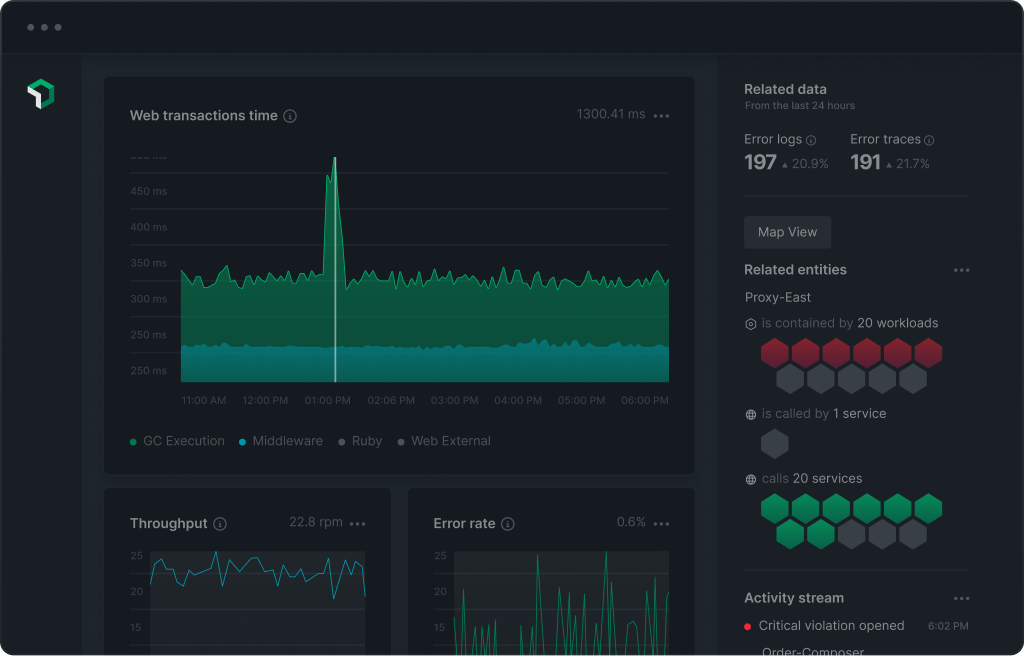현재 이 페이지는 영어로만 제공됩니다.
Quickstart
What is OpenTelemetry?
OpenTelemetry provides a secure, vendor-neutral specification for service instrumentation so that you can export data to New Relic. OpenTelemetry offers a single set of APIs and libraries that standardize how you collect and transfer telemetry data for your services.
The following components make up the OpenTelemetry project:
- Specifications for the core pillars of observability to drive consistency across all projects. New Relic supports all of these signals: traces, metrics, and logs (see details below)
- APIs that contain interfaces and implementations based on the specifications SDKs (reference implementations of the APIs) created specifically for languages like Java, Python, Go, Erlang, and more
- Collectors that offer a vendor-agnostic implementation for processing and exporting
- Exporters that enable you to send data to a backend of your choice
How OpenTelemetry works with New Relic
New Relic supports the native OpenTelemetry Protocol (OTLP) for exporting telemetry data. This allows you to use the vendor neutral components developed by the OpenTelemetry community to export your data to New Relic.
Get started!
You can easily instrument your service with OpenTelemetry and export your telemetry data to New Relic. Follow this OpenTelemetry guide to get started.
Authors
Support
BUILT BY NEW RELIC
Need help? Visit our Support Center or check out our community forum, the Explorers Hub.
Need help? Visit our Support Center or check out our community forum, the Explorers Hub.
